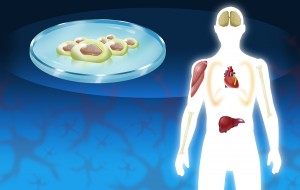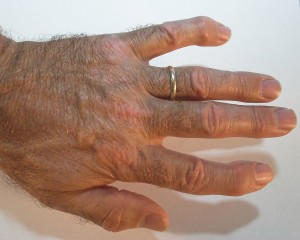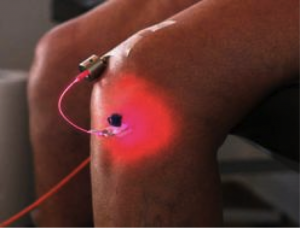Lately there have been various news reports cautioning us about the Western diet. We eat too much processed food, we eat too much sugar and we have to be careful with how much fat and what kind of fat we eat. Take this story from the CNN. Half the world lives in big cities. And this number will reach 70% in the year 2050, if the urbanization trend continues at the same rate. With it comes the consumption of fast food. The wealthier people are, the more meat they eat. This is exactly what is bad for us. Too much meat can cause gout, particularly when paired with alcohol. First it is time to explain some more about the Western diet. “The biggest features of a Western diet are overconsumption of over-refined sugars, highly refined and saturated fats, animal protein and a reduced intake of plant-based fibers,” says Ian Myles. He is located at the U.S. National Institute of Allergy and Infectious Diseases. This statement is specific enough: we are eating too much fat, red meat, salt and sugar, and too little fiber.
Too much fat
In processed foods we get too many omega-6 fatty acids, which have been shown to cause clogging of arteries and causing heart attacks and strokes, if not balanced with enough omega-3 fatty acids. But many processed foods still have hidden trans fats, which distribute free radicals in your system; this in turn causes hardening of the arteries again. Free radicals also age you faster. A candy bar with palmitic acid and fructose for instance, leads to a slow grade inflammation. The immune system mistakenly takes palmitic acid for the gut bacterium E.coli and mounts an immune reaction. This low-grade inflammation causes inflammation in the blood vessels, but also weakens the immune system. The sugar part of the candy bar oxidizes LDL cholesterol leading to clogging of arteries, which causes heart attacks and strokes.
Too much red meat
Grain fed and antibiotic treated regular beef changes the gut bacteria and can cause super bugs. The change of the gut flora can lead to inflammation in the gut lining and something called “leaky gut syndrome”. We carry almost 2 pounds of gut bacteria in us at any given time. But residual antibiotics from regular beef and chicken reduces that amount and changes the composition of our gut flora.
You can read in this blog that the changes taking place from consuming regular beef changes your liver metabolism and leads to accelerated hardening of the arteries, which in turn causes deadly heart attacks and strokes. On the other hand, grass fed beef or organic beef do not do this. To prevent leaky gut syndrome, heart attacks and strokes from developing you can take probiotics every day, which should include these two species: Lactobacillus acidophilus and Bifidobacterium bifidus. This keeps your gut flora stable and does not allow your food to undermine your health.
To much salt and sugar
Too much salt is often in processed food to prolong the shelf life. But we humans are very sensitive to overdoses of salt. Our kidneys have to work overtime to get rid of the excess salt. We need to drink enough water to allow the kidneys to produce urine, which will eliminate the excess salt. Persistent excessive salt intake will also cause high blood pressure. High blood pressure can cause heart problems, strokes and aortic aneurysms. Restaurant food often contains too much salt and sugar.
Too little fiber
The more food is processed, the less fiber it will contain. If you go for the pizza, it may taste good, but where is the fiber? If you eat bread and butter, where is the fiber? You may say that you like a donut. I ask you again: where is the fiber? The end result is that toxins that normally would have been bound to fiber in the colon and were eliminated in the stool are now interacting with the wall of the colon causing colonic polyps and colon cancer. It may not only be fiber as plant-based diets rich in fruits, non-starchy vegetables, legumes, and whole grains were shown to be associated with a lower risk of the most common cancers. That’s the reason why people who consume a Western diet have higher rates of cancer in general. They lack fruits and vegetables.
Polyunsaturated fatty acids
The recommendation in the 1980’s until about 2010 of a low fat diet to prevent heart attacks and strokes has failed miserably. It turned out that polyunsaturated fatty acids are of the omega-6 type, which gets metabolized into arachidonic acid and causes inflammation. The immune system gets suppressed from the chronic inflammation and the person becomes more prone to infections. As low fat diets are typically high in carbohydrates, there is a calorie surplus causing weight gain. Dr. Fife explains in his book that polyunsaturated acids interfere with the insulin receptor feeding into insulin resistance, which makes it even more difficult to control the metabolism and leads to more weight gain (Ref.1). The end result is what we have observed over the last few decades, a relentless obesity wave in the civilized world. It is a direct result of the Western diet.
Cancer caused by the Western diet
Breast cancer, colon cancer and prostate cancer are cancers that are related to the Western diet. But there are likely many other cancers that are also caused by it.
We know that free radicals cause cancer, such as from trans fats and rancid polyunsaturated fatty acids found in processed foods. Cancer is more common in obese people and people with diabetes.
Habits that make us eat more
There are habits that make us eat more like snacking and falling for so-called “fitness food” which contains dubious ingredients. It may come as a surprise, but married people can also fall prey to unhealthy habits together, forgetting about working out and sneaking in “skinny cocktails”. Read what Cynthia Sass, registered dietician had to say about this on CNN.
Solution to the Western diet
You may expect me to say that you should modify this or that in the Western diet. Modification does not work. You have to get radical here! The real solution is to abandon the Western diet altogether. Replace it with the Mediterranean diet without sugar and starchy foods. It is not that as bad as you can see from 1 week of recipes that my wife included in my book: “A survivor’s Guide To Successful Aging”.
You can eat cooked organic spinach, a piece of meat with slices of Avocado for breakfast. Cooking is done mostly with coconut oil or olive oil. Alternatively you may enjoy an egg or egg white vegetable omelette with lots of greens, mushrooms, onions and salsa and avocado on the side. Add to this caffeinated or decaffeinated coffee with stevia. Alternatively, a bowl of rolled oats, flaxseed and nuts with fresh fruit and organic milk, goat milk or yoghurt would make an excellent, sustaining breakfast. I am mentioning all of this to show you that you can get away from your familiar pancakes with maple syrup, sausages, waffles, toasts and muffins etc.
Food needs to be prepared form scratch with organic ingredients. GMO foods need to be avoided as the final judgment on these is decades away, and you do not want to become a human guinea pig.
Conclusion
The only way to “improve” a Western diet is to eliminate it and replace it by the Mediterranean diet. Throw all the processed food into the trash where it belongs! Avoid omega-6 fatty acids (polyunsaturated fatty acids), which have been shown to weaken the immune system and cause insulin resistance. The best fats are omega-3-fatty acids from marine oils (fish oil), coconut oil and olive oil. Forget all the other oils that are heavily advertised. They are not healthy.
I stick to organic foods although they are more expensive. Don’t forget that apart from a good diet you need to engage in a regular exercise program in order to prevent heart disease and cancer. And don’t stress out over the changes that you are about to make. Remember to manage your stress and relax!
References:
- Bruce Fife, C.N., N.D.: “The Coconut Oil Miracle”, 5th edition,2013, Penguin Books, NY 10014















